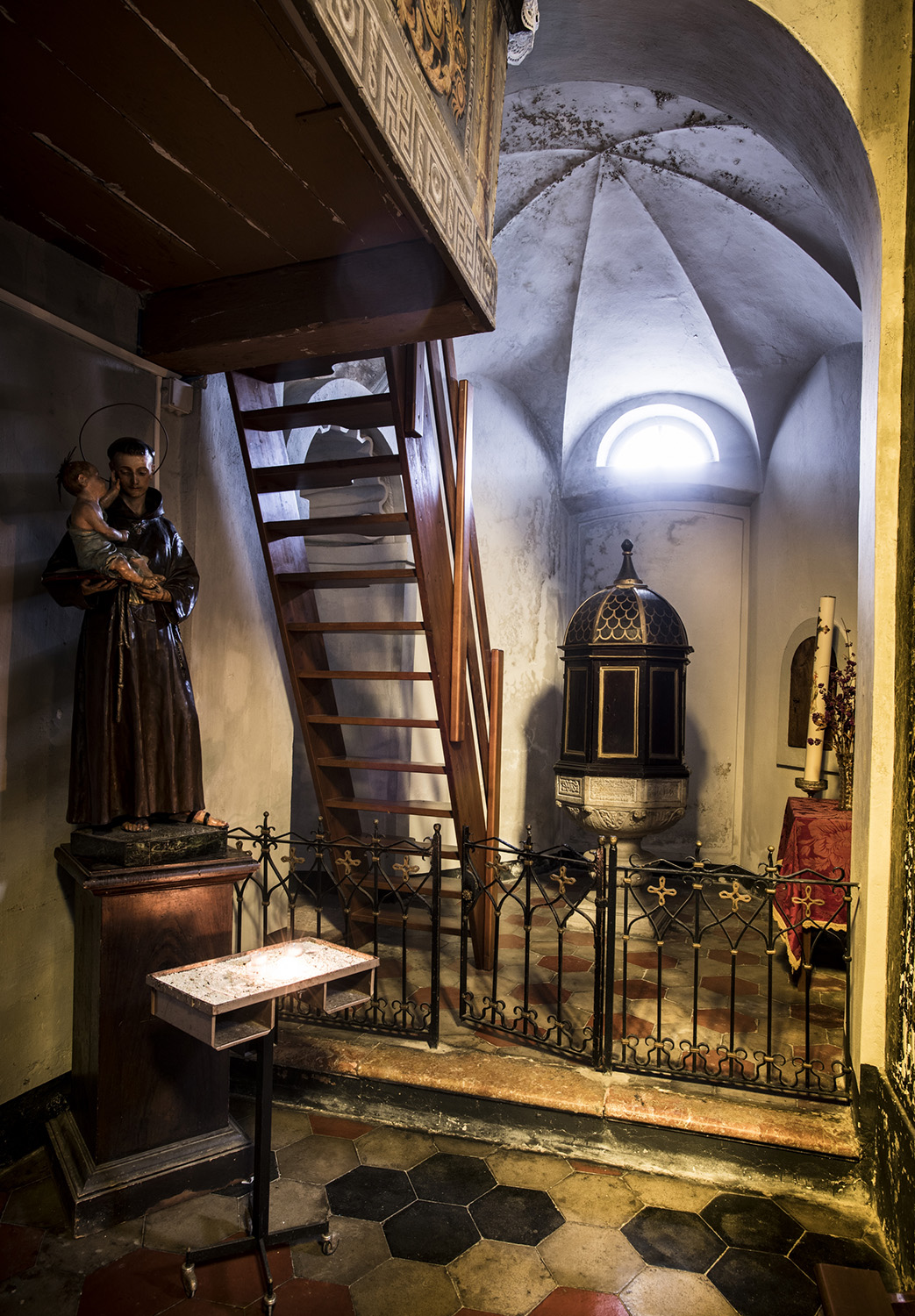ARCHITECTURE AND RELIGION
The Parish Church of San Vincenzo Martire in Claino
The municipality of Claino con Osteno has two parish churches: the church of Saints Pietro and Paolo in Osteno and the church dedicated to Saint Vincent Martyr in Claino.
The latter, like all churches in the town, is westward facing and was erected in the middle of the inhabitants’ dwellings to protect the town from raids of brigands. At that time, access to the town was protected by arcades equipped with gates that were boarded up during the night.
The church was already dedicated to the martyr Saint Vincent in 1300 and was then consecrated on the 3rd August 1510 under the Diocese of Milan, to which it still belongs today.
The Church must have been very small in ancient times and was therefore only used for baptisms.
Prior to 1200, the ancient portal on the left, created in a Romanesque Style, was the entrance to the church, while the altar would have been located where the baptistery can be found today.
Before 1300, the little church had already been extended on its right side to take its current cross-like layout while the beautiful dome was built in 1847 and frescoed free of charge by a native of Claino, Vincenzo de Bernardi, in 1860.











